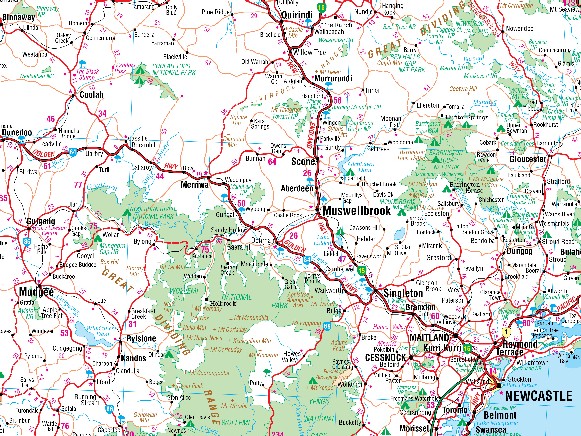Upper Hunter Case Study
Case Study
This web site has been developed within the Upper Hunter Community.
Throughout the website the Upper Hunter region, residents, organisations and Muswellbrook Shire Council have been used to provide examples and personal connections to assist users to see the relevance of the information in a local setting. Every area will have their own version of these stories and discovering them will better place you to provide services to your own community.
Upper Hunter
ABS 2021
ABS SA3 Area Includes:
Upper Hunter Shire Council
Muswellbrook Shire council
People
| People | 30584 |
| Male | 50.7% |
| Female | 49.3% |
| Median age | 39 |
Families
| Families | 8,039 |
| Average children per family | 1.9 |
Dwellings
| All private dwellings | 14,054 |
| Average people per household | 2.4 |
| Median weekly household income | $1,521 |
| Median monthly mortgage repayments | $1,538 |
| Median weekly rent | $290 |
| Average motor vehicles per dwelling | 2 |
Indigenous
| Aboriginal and Torres Strait Islander people | 2,893 | 9.5% |
The place
Click on image for high resolution photo (546k)
In Our Own Words: The stories
These stories are part of the Aboriginal Oral History Project in Muswellbrook Shire (NSW). The endeavour was to gather stories without the influence of existing written history as this is often written from the perspective of non-Aboriginal people.
These life stories build on those already told in the published book Wannin Thanbarran. This is a record of Aboriginal and European contact in the Muswellbrook and Upper Hunter Area.
We wanted to ensure that cultural connections are not forgotten and that we preserve invaluable stories for future generations and that through the sharing of these experiences and stories there will be an enhanced appreciation and understanding between generations and communities.
The people & links to the videos
Aboriginal and Torres Strait Islander people should be advised that this exhibition contain images, voices or names of deceased persons in photographs, film, audio recordings or printed material.
Readings
101. Rock art & Rocks
The term rock painting is used to describe Aboriginal art where materials have been applied to a rock surface to make a design or picture. These may be elaborate, multi layered and profuse or more simple, like the western concept of a drawing. Paintings and drawings on rock surfaces are found across Australia. There are numerous sites in the Upper Hunter:
READING 101: Rock art and Rocks
- READING 101A: Introduction to Rock Art
- READING 101B:Hands on Rock
- READING 101C:Biame
Tiddalik is the key character in one of the most widely related dreaming stories on the eastern seaboard of Australia.
- READING 101D:Tiddalik
102. The Upper Hunter History of Aboriginal and European contact Part A
This web site was developed within the Upper Hunter Community. The following are some of the stories of Aboriginal and European contact
READING 102: Upper Hunter History of Aboriginal and European contact: Part A
READING 102A : Aboriginal people in the Hunter Valley
READING
102B : First contact in the Upper Hunter Valley
READING
102C : The Trial of Lieutenant Nathaniel Lowe
READING
102D : The Impact of dispossession
READING 102E : Caroona
and St Heliers
READING 102F : St
Clair (Mount Olive), Caroona and the Aborigines Inland Mission
103. The Upper Hunter History of Aboriginal and European contact Part B
READING 103: Upper Hunter History of Aboriginal and European contact: Part B
READING 103A : Railway
tents, 14 pound hammers and assimilation
READING 103B : Aboriginal
Men, Private Contractors and Liddell Power Station
READING 103C : No
Time like the Present: A personal note from Deirdre Heitmeyer
READING
103D : Muswellbrook Shire Council document for Reconciliation Statement of Principles
104. Contemporaries
Aboriginal community member
"Personally I am always talking about my colour and our culture, how blacks deal with things, how we think, how we feel and they try to be understanding about that." An Aboriginal community members speaks about experiences of services.
- READING 104A : Aboriginal community member
CEO of Aboriginal organisation
Some organization don’t understand the needs of Aboriginal people, and all the cultural awareness in the world is not going to change that, because they have their minds set in government departments on how Aboriginal people are supposed to be. A CEO of an Aboriginal organisation talks about services.
- READING 104B : CEO of Aboriginal organisation
Glen Morris
"My name is Glen Morris. I was born in 1951 in Kempsey on the Mid-North Coast of NSW. Me family lived on a Reserve there called Burnt Bridge. There was four of us in the family, me elder sister, myself, younger sister and younger brother. My father worked at the Golf Links as Green Keeper at Kempsey."
- READING 104C : Burnt Bridge, The Welfare Board, Doctors
- READING 104D: Living on the Reserve in Armidale 1950s/60s
- READING 104E: Traditional knowledge
- READING 104F : Discrimination - swimming, movies, education and jobs
105. The Reconciliation Mural
READING 105. The Reconciliation Mural




